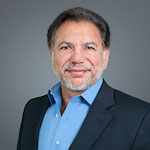Adult Stem Cell Therapy & Platelet Rich Plasma
Sarasota Shoulder Surgeon Serving Venice, Bradenton, Tampa
What most people call the shoulder is really several joints that combine with tendons and muscles to allow a wide range of motion in the arm. Most of the motion in your arm comes from the ball and socket joint called the glenohumeral joint. However, and interestingly, many patients with a frozen shoulder-one that has little to no motion in the ball and socket joint- can still move their arm. This motion takes place because the scapula or shoulder blade can slide around the torso or ribs. There are 4 joints in the shoulder glenohumeral, acromio-clavicular(AC) joint, sternoclavicular(SC) joint and scapulothoracic articulation.

Anatomy

This simplified illustration of the shoulder highlights the major components of the joint. As opposed to the hip joint which has a deep socket, the shoulder socket is very shallow. As such it relies on tendons, ligaments and the capsule for stability. Because it is shallow it exhibits a great amount or motion in various planes.
Causes of Shoulder Pain
Pain in the shoulder can be extrinsic or intrinsic. Neck problems, even stomach problems as well as insidious coronary artery disease tumors, infection and nerve-related problems can cause shoulder pain. However, most shoulder problems fall into four major categories:
- Tendon inflammation (bursitis or tendinitis) or tendon tear
- Instability
- Arthritis
- Fracture (broken bone)
Dr. Bennett treats most shoulder pain initially with medications and/or injection based upon its source. For issues that require surgery, he is an expert with minimally invasive techniques including arthroscopy. He also has had success at treating some conditions with PRP and adult stem cells.
Bursitis
Bursae are small, fluid-filled sacs that are located in joints throughout the body, including the shoulder. They act as cushions between bones and the overlying soft tissues, and help reduce friction between the gliding muscles and the bone. Inflammation of the bursae usually suggests that some underlying problem is present. Rarely with the exception of a congenital spur is bursitis primary.
Tendinitis
A tendon is a cord that connects muscle to bone. The most commonly affected tendons in the shoulder are the four rotator cuff tendons and one of the biceps tendons. Dr. Bennett has published numerous peer-reviewed studies on rotator cuff problems, even including arthroscopic repair.
Tendon Tears
Splitting and tearing of tendons may result from acute injury or degenerative changes in the tendons due to advancing age, long-term overuse and wear and tear, or a sudden injury. Dr. Bennett has published numerous peer-reviewed studies on rotator cuff problems, even including arthroscopic repair.
Impingement
Shoulder impingement occurs when the top of the shoulder blade (acromion) puts pressure on the underlying soft tissues when the arm is lifted away from the body. As the arm is lifted, the acromion rubs, or “impinges” on, the rotator cuff tendons and bursa. This can lead to bursitis and tendinitis, causing pain and limiting movement. Over time, severe impingement can even lead to a rotator cuff tear. Interestingly, even instability can lead to impingement.
Instability
Shoulder instability occurs when the head of the upper arm bone is forced out of the shoulder socket. This can happen as a result of a sudden injury or from overuse.
Shoulder dislocations can be partial, with the ball of the upper arm coming just partially out of the socket, a subluxation. A complete dislocation means the ball comes all the way out of the socket.
Once the ligaments, tendons, and muscles around the shoulder become loose or torn, dislocations can occur repeatedly. Subluxation can occur when the biceps tendon insertion on the socket is torn as well.Repeated episodes of subluxations or dislocations lead to an increased risk of developing arthritis in the joint.
Arthritis
Shoulder pain can also result from arthritis. There are many types of arthritis. The most common type of arthritis in the shoulder is osteoarthritis, also known as “wear and tear” arthritis. Often people will avoid shoulder movements in an attempt to lessen arthritis pain. This sometimes leads to a tightening or stiffening of the soft tissue parts of the joint, resulting in a painful restriction of motion. Other restrictions of range of motion include a frozen shoulder.
Fracture
Fractures are broken bones.
Examination
Yes, have you been to a surgeon who has never examined your shoulder? The shoulder exam is one of the most important aspect of developing a proper diagnosis and for treating shoulder problems. Dr. Bennett is an expert and specialist shoulder surgeon.
Dr. Bennett’s immediate services area is localized to Sarasota, Bradenton, Venice, North Port, Englewood and Lakewood Ranch, Florida. With easy access to Tampa-St. Petersburg Airports, as well as Ft Myers airport, his reach extends to Naples, Port Charlotte, out-of-state and International patients.






